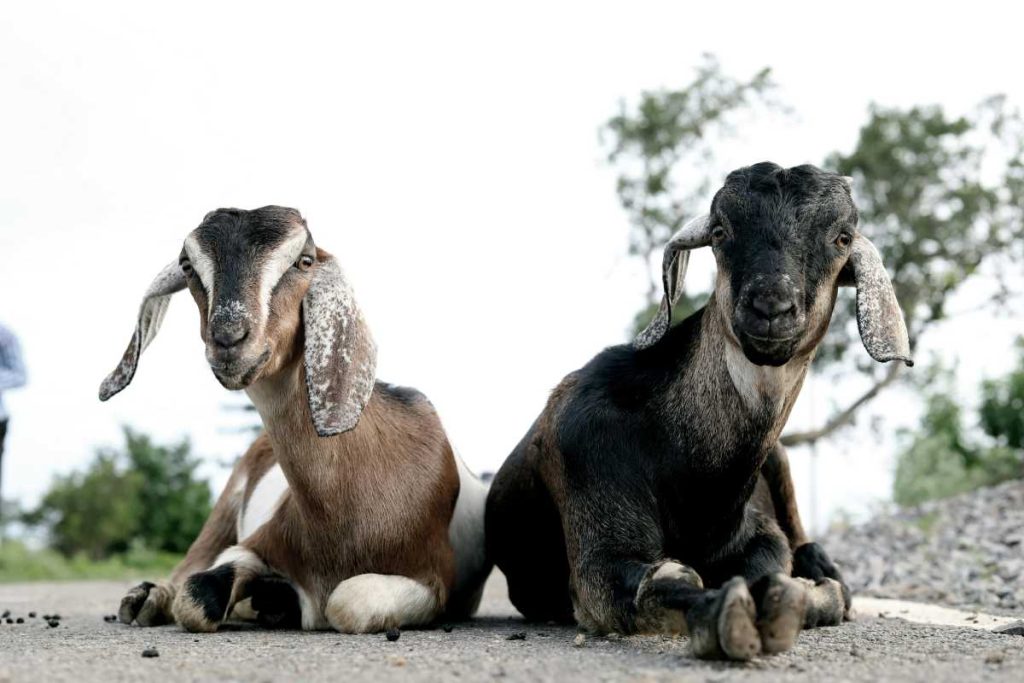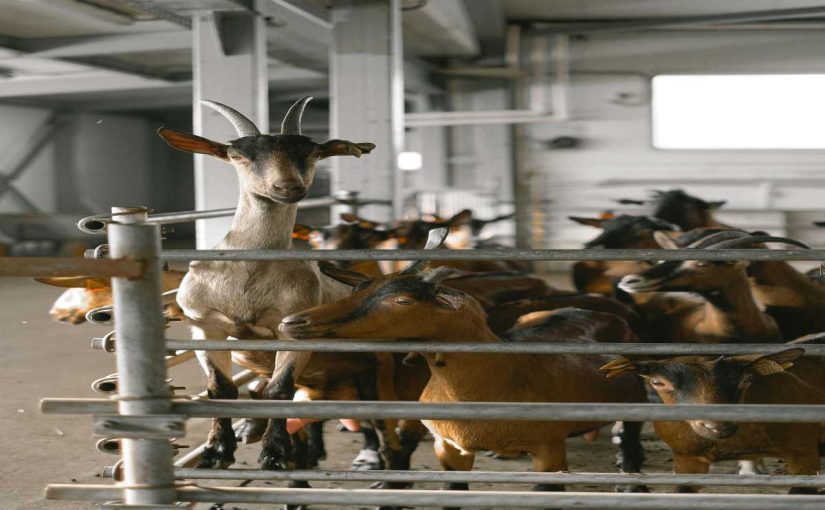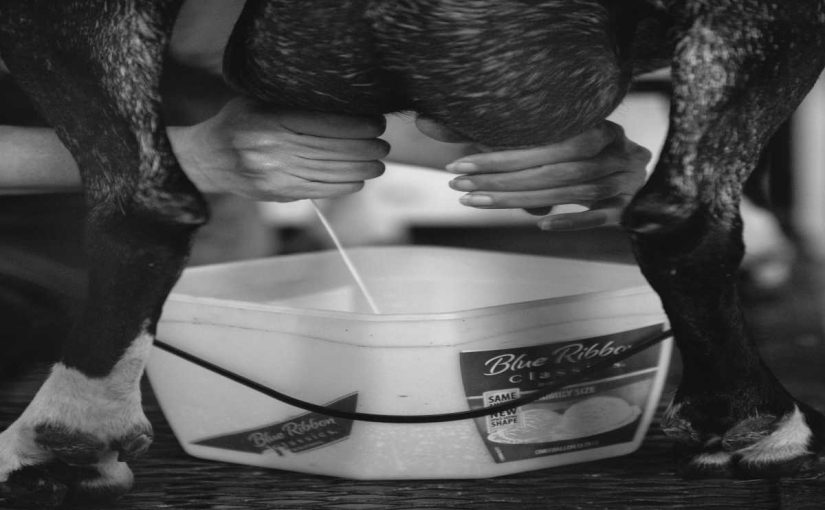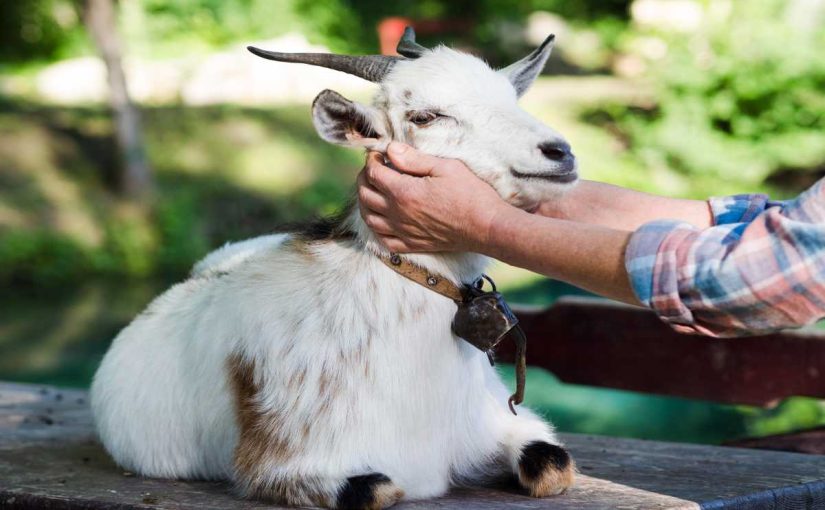Goats are known for their curious, independent, and often mischievous nature. Whether you’re raising goats for milk, meat, fiber, or as pets, understanding their behavior is essential for managing them effectively and ensuring their well-being. Knowing how goats think, interact with their environment, and communicate with each other can help you create a more comfortable and safe environment for your herd.
In this blog, we’ll explore the unique aspects of goat behavior, including their social structure, communication methods, and common habits. This knowledge will help you build better relationships with your goats and provide them with the care they need.
1. Goats are Social Animals
One of the most important things to know about goats is that they are highly social creatures. They are herd animals, which means they thrive in groups and form strong bonds with other goats. A solitary goat can experience stress, loneliness, and even depression if left alone for extended periods.
Why Social Interaction is Important:
- Mental Well-Being: Goats are more relaxed and healthier when they have companions. A single goat in isolation can become anxious, leading to behavioral issues or health problems.
- Behavioral Development: Goats learn from each other through social interactions. They observe and imitate behaviors like feeding, play, and communication, which helps them adapt to their environment and learn survival skills.
- Preventing Boredom and Destruction: A herd of goats will engage in more natural behaviors, like browsing and playing, which can prevent boredom and reduce destructive tendencies, such as chewing on fences or other objects.
Tips for Managing Social Behavior:
- Keep at least two goats together to ensure they have a social companion.
- Introduce new goats to the herd slowly and carefully to avoid aggression or territorial behavior.
- Provide enough space for your goats to interact, but also allow for some individual retreat if needed.
2. Curiosity and Exploration
Goats are known for their extreme curiosity and love of exploration. They will often investigate anything in their environment, from new objects to people and even other animals. This innate curiosity is part of what makes goats such engaging and interesting animals to care for, but it can also lead to mischief if not managed properly.
Why Goats Are So Curious:
- Foraging and Browsing: In the wild, goats are natural foragers, and their curiosity is tied to their need to find food. They will nibble on leaves, shrubs, and even tree bark as part of their exploratory behavior.
- Problem-Solving: Goats are very intelligent animals and will often solve problems to get what they want, whether it’s reaching food or escaping from an enclosure.
- Social Interaction: Curiosity can also extend to their relationships with other goats, animals, and humans. Goats are keen to explore their social dynamics, sometimes even testing boundaries to see how others react.
Tips for Managing Curiosity:
- Provide a stimulating environment with plenty of objects for your goats to explore, like climbing structures, hay, and natural forage.
- Secure all enclosures and fences, as curious goats will often find ways to escape if given the opportunity.
- Keep objects that could be dangerous or harmful, like electrical cords or sharp tools, out of reach.
3. Playfulness and Energy
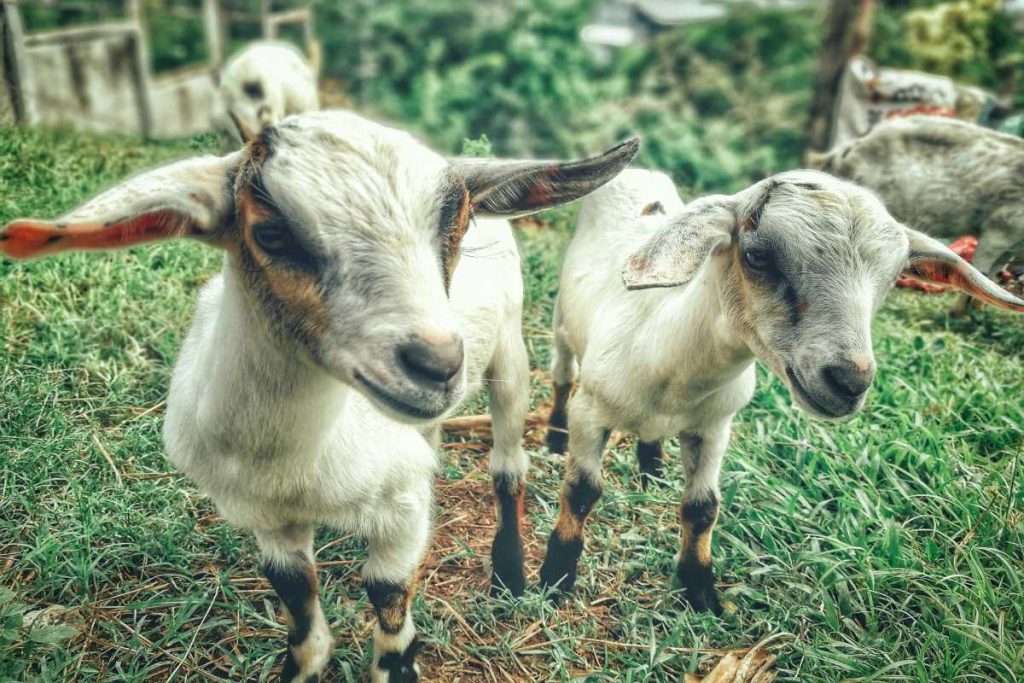
Goats, especially young kids (baby goats), are naturally playful and energetic. Play is an important part of their development, as it helps them practice social behaviors, build coordination, and develop strength. Playful behavior is also a sign of a healthy and happy goat, as goats that are stressed or ill tend to be less active.
Common Play Behaviors:
- Jumping and Bouncing: Goats will often jump, hop, or “bounce” around for fun, especially when they are feeling energetic and happy. This is a common behavior in kids but can also be seen in adult goats.
- Headbutting: While headbutting might seem aggressive, it’s actually a common form of play and social interaction. Goats use headbutting to establish dominance within their herd, but it’s also a way for them to engage in friendly rivalry and competition.
- Climbing: Goats are excellent climbers and enjoy scaling rocks, structures, or even other animals. This behavior helps them develop strength and agility and satisfies their curiosity.
Tips for Managing Playfulness:
- Ensure your goats have enough space to run, jump, and play freely.
- Provide structures like rocks, platforms, or wooden beams to satisfy their climbing instincts.
- Monitor playtime to ensure goats aren’t playing too roughly, especially with weaker or younger herd members.
4. Goat Communication: How They Talk to Each Other
Goats have a range of vocalizations and body language that they use to communicate with each other and with humans. Understanding these signals can help you interpret their needs and emotions, improving your relationship with them and your ability to manage your herd effectively.
Common Goat Vocalizations:
- Bleating: The most common goat sound, bleating is a way for goats to communicate with each other. It can indicate a variety of things, including hunger, distress, or a call to other goats.
- Grunting or Snorting: These sounds are often used when a goat is curious or annoyed. A goat may grunt when they encounter something new or feel frustrated.
- Screaming: Goats, particularly those in heat, may scream loudly as a way to attract attention or communicate with other goats in the area.
Body Language Signals:
- Tail Position: A goat’s tail is a good indicator of its mood. A relaxed tail means the goat is calm and content, while a tail held high or wagging rapidly can signal excitement or alertness.
- Ear Movement: Goats use their ears to communicate. Ears pointing forward generally indicate curiosity or interest, while ears flattened backward can signal aggression or irritation.
- Headbutting or Pushing: As mentioned earlier, headbutting is a social behavior that is common among goats. When done gently, it’s a sign of playful interaction or friendly rivalry. However, aggressive headbutting can occur when goats are fighting for dominance within the herd.
Tips for Understanding Communication:
- Pay attention to vocalizations and body language to gauge the mood of your goats.
- Be aware of when goats are headbutting in play versus when it might be an indication of aggression.
- Respond to distressed vocalizations or behavior quickly to prevent issues such as injury or escape attempts.
5. Feeding and Foraging Behavior
Goats are browsers, not grazers like cattle or sheep. This means that they prefer to eat a variety of plants, including shrubs, leaves, twigs, and herbs, rather than just grasses. Understanding their foraging behavior is key to providing the proper diet and preventing them from eating harmful plants.
Feeding Habits:
- Selective Feeding: Goats are very selective about what they eat. They often nibble on different plants and can be picky about the quality of their forage. They will choose the most tender and flavorful parts of plants, such as young leaves or buds.
- Grazing Time: Goats may graze throughout the day, but they do not graze in the same way other livestock do. They prefer to browse in short bursts rather than continuously grazing.
- Scent and Taste: Goats use their keen sense of smell to locate food and often sniff objects before deciding whether to eat them. They may also be drawn to certain plants based on taste or texture.
Tips for Managing Feeding Behavior:
- Provide a variety of forage to keep your goats engaged and satisfied, including grasses, herbs, and shrubs.
- Ensure they have access to fresh water and a balanced diet with adequate nutrients.
- Prevent goats from eating harmful plants by fencing off areas with toxic vegetation or carefully monitoring their foraging habits.
6. Territorial and Dominance Behavior
Goats, like many other herd animals, have a complex social hierarchy. There is often a dominant goat in the herd, and the rest of the goats will follow the lead of the dominant individual. Understanding these dynamics is crucial for managing goat behavior and preventing conflicts.
Signs of Dominance:
- Headbutting: Dominant goats often use headbutting to establish their position within the herd. This can happen between males or between females as they vie for the role of leader.
- Posture and Body Language: Dominant goats will often stand tall, puff up their chests, and move confidently. They may also control access to food and other resources.
- Aggression: While most goat herds maintain a peaceful social structure, there can be conflicts, particularly if new goats are introduced or if there’s competition for food or space.
Tips for Managing Dominance Behavior:
- Ensure there’s enough space for all goats to move freely and establish their place in the social hierarchy without conflict.
- Introduce new goats carefully, as they may challenge the dominance structure and cause disruptions.
- Provide multiple feeding stations and resting areas to prevent competition for resources.
Conclusion
Understanding goat behavior is essential for successful goat farming and management. By recognizing their social nature, curiosity, playfulness, communication methods, and unique feeding habits, you can create a positive environment that promotes the health, happiness, and productivity of your herd. Whether you’re raising goats for their milk, meat, fiber, or simply as companions, this knowledge will help you build a strong bond with your animals and ensure their well-being.

